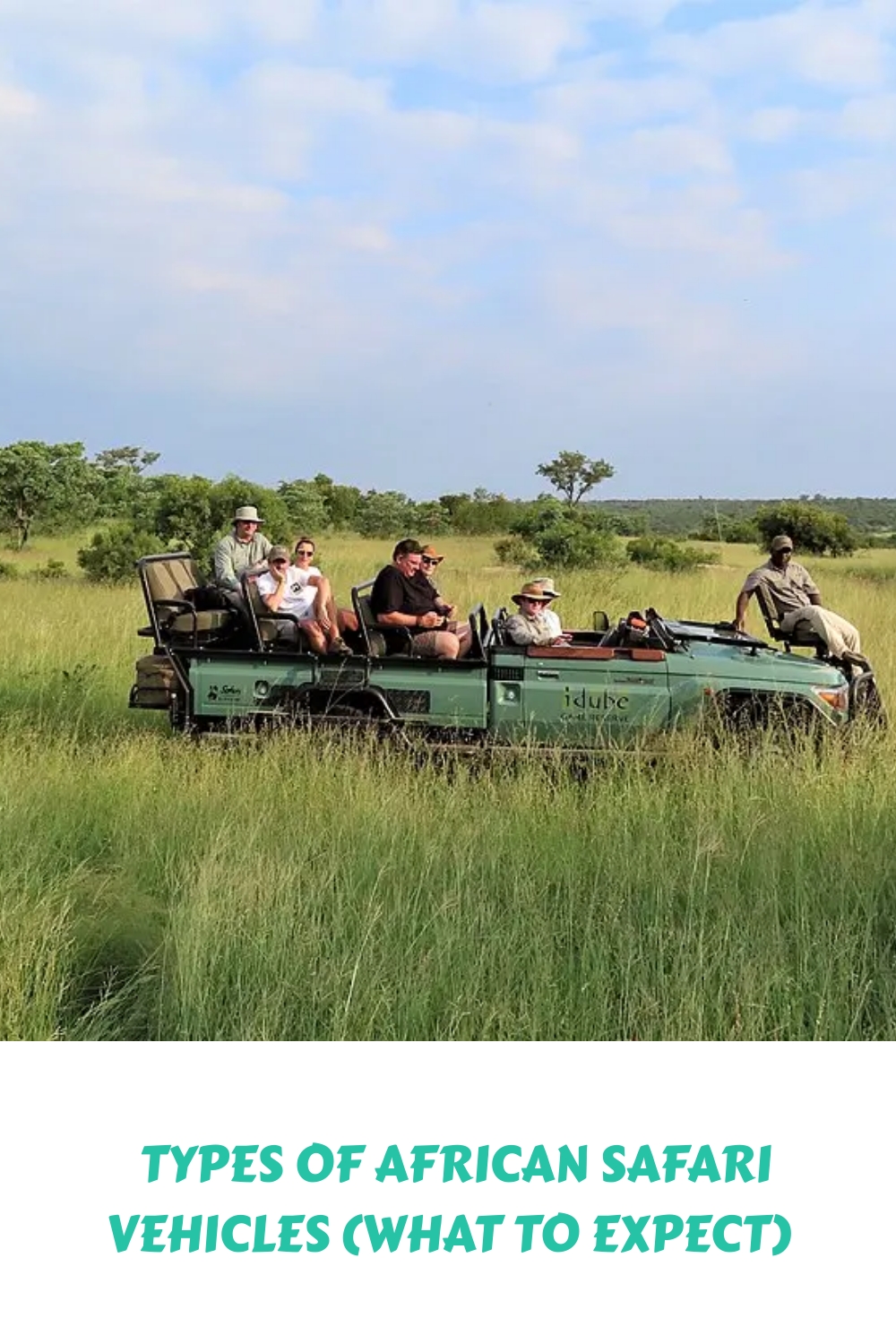🤔Choosing the best African Safari Vehicles
When choosing the best African safari vehicles, consider your comfort needs, the type of wildlife experience desired, and the safari location when choosing an African safari vehicle.
An open-sided vehicle offers a more immersive experience with fewer restrictions in private concessions. This would be ideal for safaris in Southern Africa such as Kruger National Park, Sabi Sand Game Reserve, and Okavango Delta.
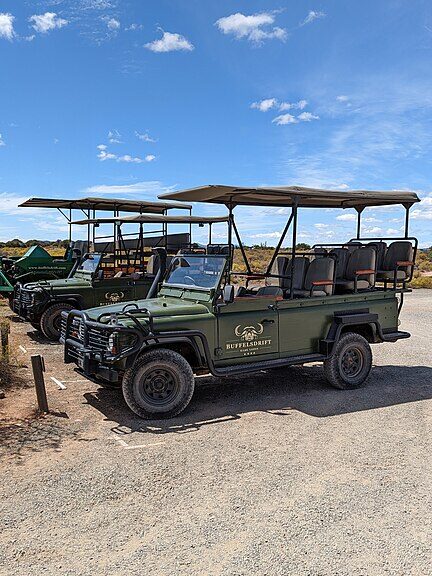
A closed vehicle provides comfort, especially for longer journeys. This would be the ideal vehicle for eastern Africa and Kenya safaris to Maasai Mara National Reserve, Amboseli National Park, Tsavo National Park, or Ngorongoro Crater.
🚙 Different Safari Vehicles for Different Experiences
African safari vehicles are as varied as the landscapes they drive through. Each type offers a distinct experience, catering to different preferences and safari styles.
The open-sided 4WD vehicles are a popular choice in Southern Africa. They provide an unobstructed, 360-degree view of the wilderness which is ideal for game drives and close wildlife encounters. These vehicles allow you to feel the African sun on your skin and the breeze in your hair, bringing you closer to nature.
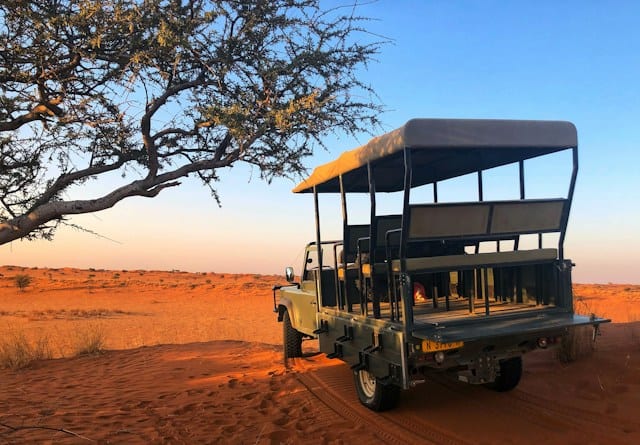
In contrast, Eastern Africa often favors closed African safari vehicles, especially for longer journeys between parks. These include mini-buses and 4WDs with a pop-top roof hatch, offering comfort and enhanced viewing opportunities. A closed vehicle protects you from the elements, making it suitable for extensive travel across diverse terrains.
The type of African safari vehicle you choose can significantly impact your experience. Whether it’s the ruggedness of Toyota Land Cruisers, known for their durability and ability to handle rough terrains or the comfort of a luxury overland truck, each vehicle has its unique appeal. Understanding these differences is key to tailoring your African safari adventure to your tastes and comfort levels.
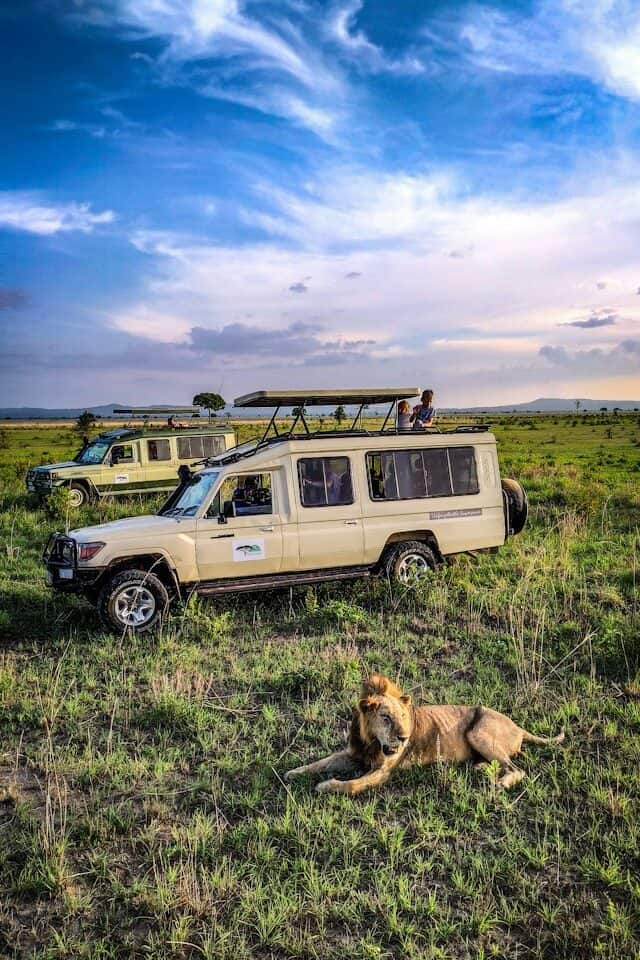
🐾 Game Drives: The Heart of African Safari Adventures
Game drives are at the heart of an African safari experience, and the choice of vehicle plays a huge role.
Open-sided safari vehicles, often preferred for game drives, offer an unmatched closeness to the wild – an unfiltered, raw connection with nature.
Open vehicles immerse you in the environment, heightening every sound and movement. Closed vehicles, while offering more protection, still provide ample opportunities for wildlife viewing and photography.
Conversely, a closed safari vehicle with a pop-top roof hatch offers a different but equally thrilling experience. These vehicles are prevalent in Eastern Africa and provide both safety and comfort. They are especially useful for long drives or in areas with stricter regulations. The pop-top roof hatch feature allows for an elevated view, ensuring that you don’t miss a moment of the surrounding wildlife drama.
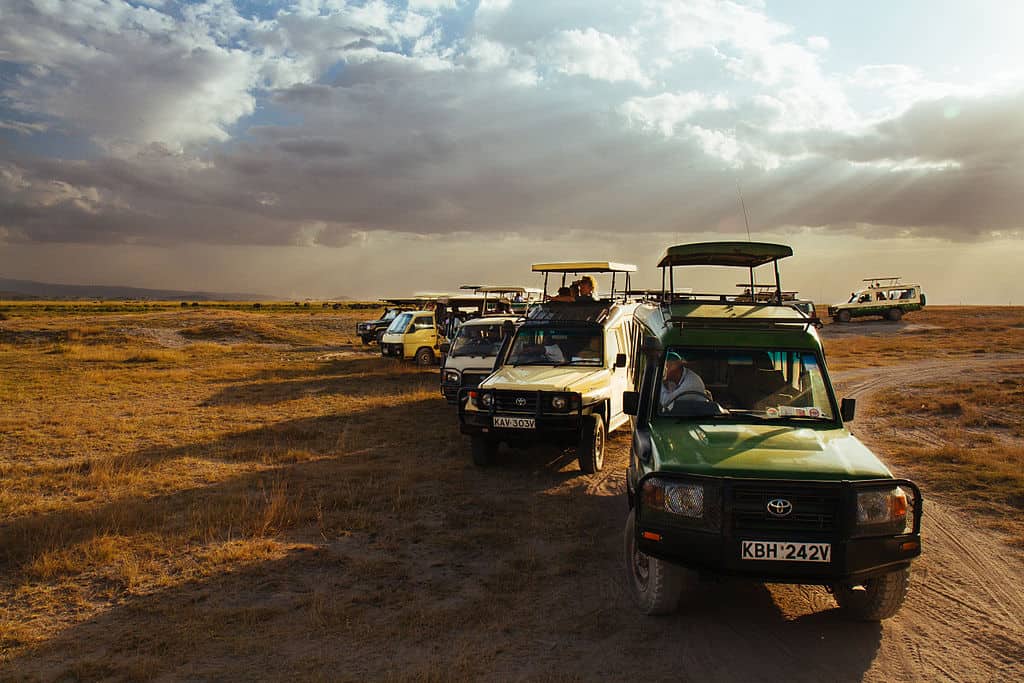
The choice of African safari vehicles for your game drive can transform your game drive experience.
🤔 Open vs. Closed African Safari Vehicles: Pros and Cons
When choosing African safari vehicles, there is a lot of debate between open and closed vehicles. Each has its pros and cons, significantly affecting your safari experience.
Open African Safari Vehicles
Open safari vehicles offer an unparalleled connection with the African wilderness. They provide unobstructed views and the thrilling sensation of being a part of the environment.
These vehicles are ideal for photographers and nature enthusiasts eager for an immersive experience.
However, open vehicles also mean exposure to the elements, which can be challenging in adverse weather conditions.
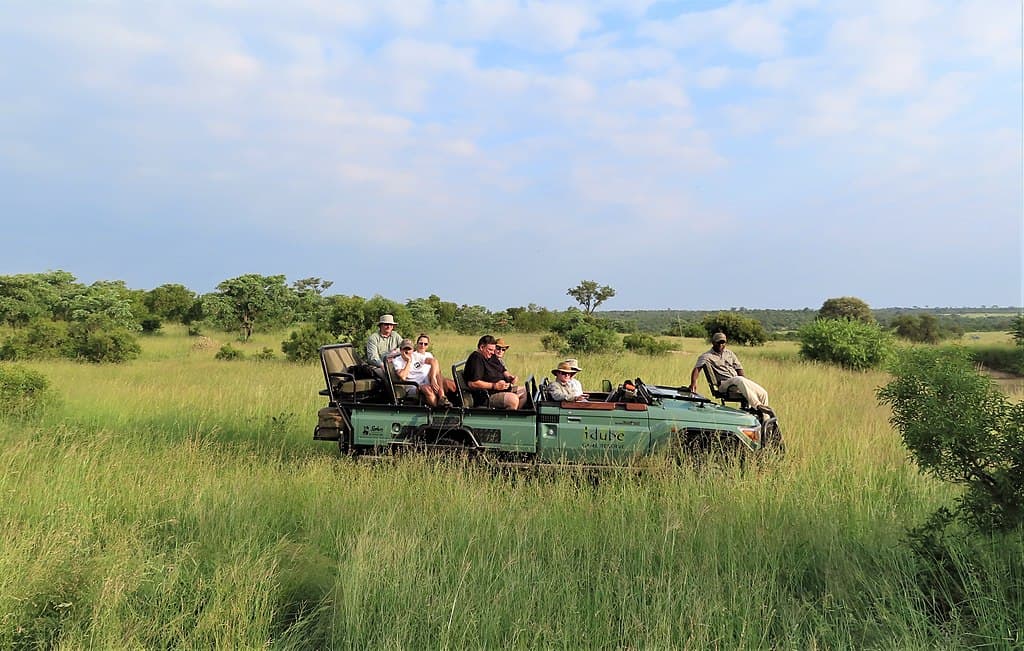
Closed African Safari Vehicles
On the other hand, closed African safari vehicles are often equipped with pop-top roofs, offering a more sheltered experience. They protect from the sun, wind, and dust, making them suitable for longer drives between destinations or for those who prefer a bit more comfort.
While they may not offer the same level of immersion as open vehicles, they still provide excellent wildlife viewing opportunities, especially with the pop-top roof hatch feature that allows for an elevated perspective.
Closed vehicles are also often the choice in regions with stricter wildlife regulations, ensuring compliance and safety.
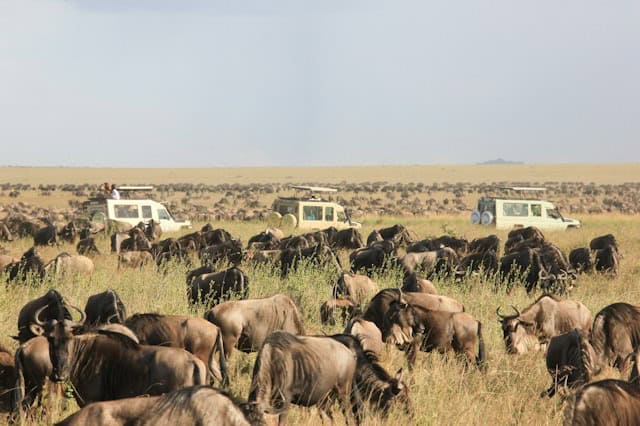
In summary, the choice between open and closed African safari vehicles depends on personal preferences, the nature of the safari, and regional considerations.
Open African safari vehicles bring you closer to nature, offering a raw and thrilling experience, while closed African safari vehicles offer comfort and protection, ensuring a relaxed and enjoyable journey through the African landscape.
🛶 Specialized African Safari Vehicles: From Minivans to Mokoros
African safari vehicles extend beyond the classic 4WDs, offering a range of specialized options for various safari experiences. The Safari mini van is a common sight, particularly suitable for larger groups or families. These game drive vehicles are equipped with large windows, ensuring that every passenger enjoys excellent visibility.
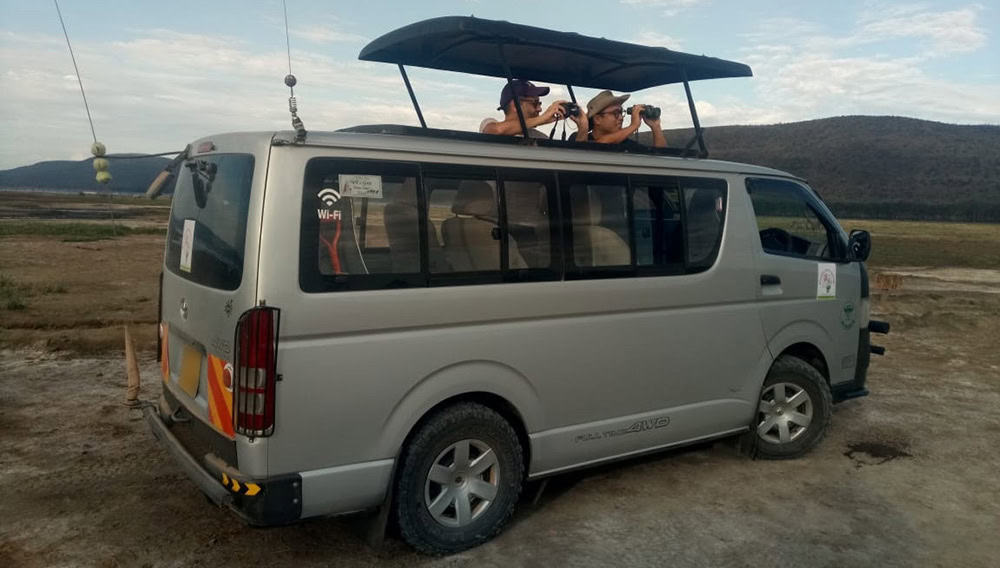
For those seeking adventure and comfort over long distances, overland trucks are a comfortable and compelling option.
Robust and designed for long journeys, they allow you to explore multiple destinations, fostering a sense of camaraderie among fellow travelers.
The spacious interiors and comfortable seating of these trucks make them ideal for extensive safari tours.
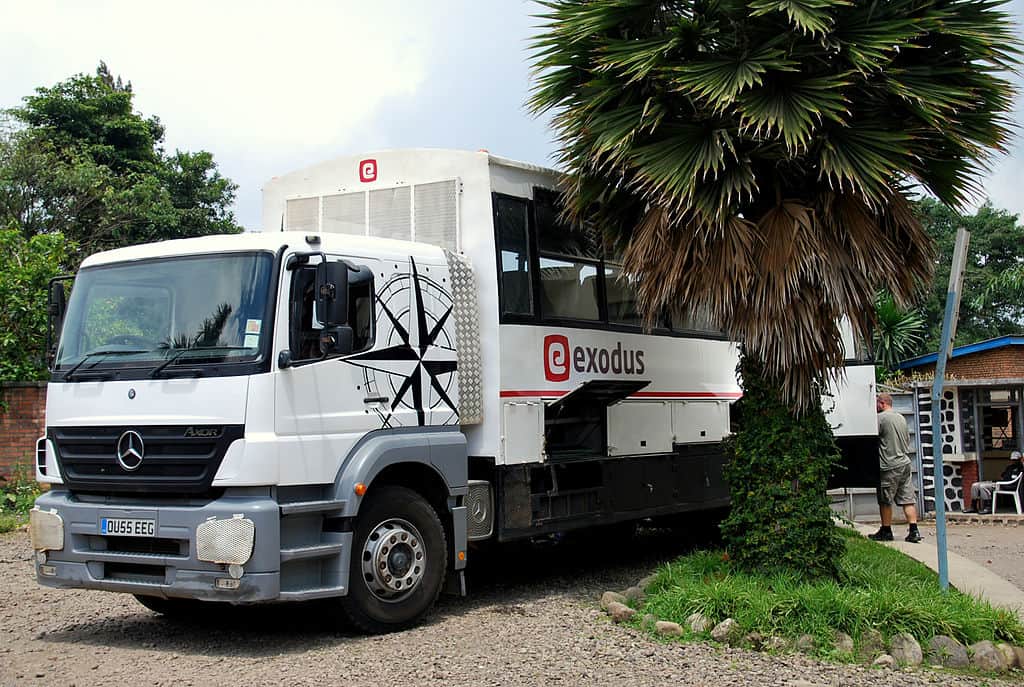
In water-rich environments like the Okavango Delta, mokoros (traditional canoes) offer a serene and intimate encounter with nature. Guided by expert locals, these canoes navigate through winding waterways, presenting a unique perspective of Africa’s aquatic ecosystems.
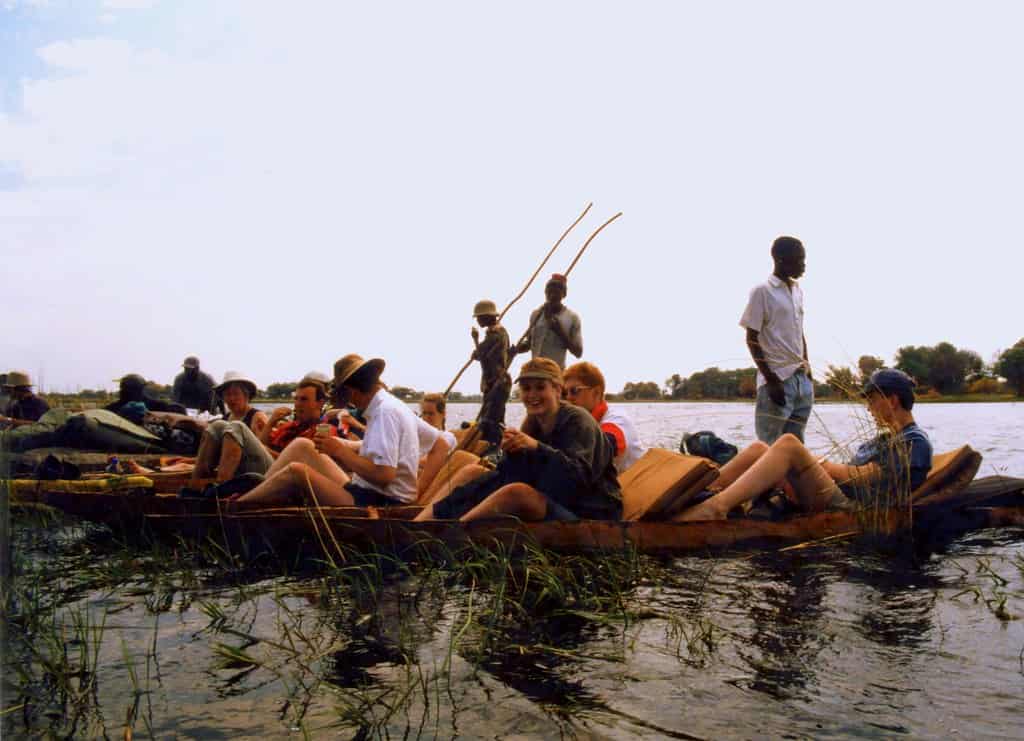
🌍 Safari Vehicle Selection: Regional Differences and Considerations
The selection of African safari vehicles is often influenced by regional characteristics and specific safari conditions.
In Southern Africa, open vehicles are prevalent, offering an intimate and direct engagement with the wilderness. Countries like South Africa, Zimbabwe, and Botswana favor these open vehicles due to fewer restrictions in private concessions, enhancing the game viewing experience.
Recommended Reading: 🏕️ Safari Tents South Africa: From Glamping to Luxury Camps
Alternatively, in Eastern Africa, including destinations like Kenya and Tanzania, closed vehicles are more common. This choice is partly due to stricter regulations in national parks and the need for vehicles suited for longer drives between parks.
Closed safari cars in these regions often feature pop-up roofs, providing a compromise between comfort and the opportunity for wildlife observation.
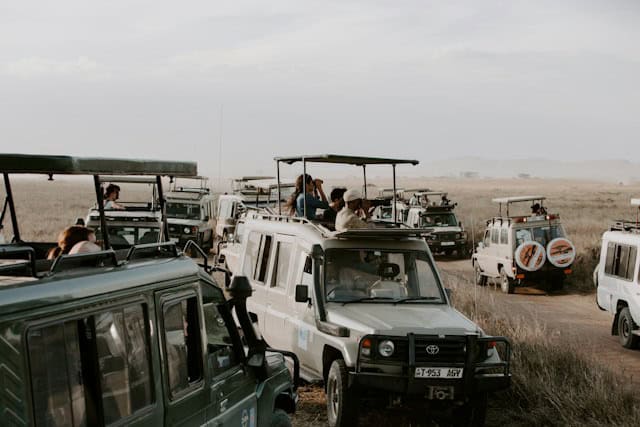
🚗 Maximizing Your Safari Experience: Tips on Choosing the Right Vehicle
Consider your comfort level, safari location, and the type of wild animals you want to encounter.
Open vehicles are best for those seeking an immersive experience and are primarily used in Southern Africa.
Closed vehicles with pop-up roofs are advisable for longer, more comfortable journeys, particularly in Eastern Africa.
Always communicate with your safari operator about vehicle types and capacities to ensure a comfortable and unobstructed view. Choose a window seat for a better view than a middle seat.
Your tour operator should ensure the type of vehicle you will be using has seat belts, radio communication, first aid kits, and fire extinguishers available.
Recommended Reading: 💎 African Safari Planners: How to Plan Luxury Safaris
🌄 Wrapping up African Safari Vehicles
Whether you opt for the openness of a four-wheel drive, the comfort of a closed vehicle, or the unique experience of a mokoro, each choice offers a distinct window into the heart of Africa’s wilderness.
Your vehicle becomes your companion on this journey, enhancing every moment of your safari. So, select wisely, embrace the adventure, and let your African safari vehicles be the key to unlocking an unforgettable experience in the wild.
“The real voyage of discovery consists not in seeking new landscapes, but in having new eyes.”
Marcel Proust
❓ FAQs: African Safari Vehicles
🦺 Are African safari tours safe?
African safari tours are generally safe, especially when conducted by reputable safari operators who prioritize safety and adhere to strict protocols.
Safety measures include the presence of experienced guides, vehicle safety features, and controlled passenger numbers.
It is important to follow the guidelines provided by the safari guides to ensure safety.
🚗 What cars are used in African safaris?
African safaris typically use large 4×4 vehicles that have been modified for passenger safety and comfort.
The most common type of safari vehicle brand include safari Jeeps and Toyota safari vehicles, notably the Toyota Land Cruiser, which is known for its reliability and ability to handle tough conditions.
These vehicles are often equipped with features like snorkels for deep water, upgraded suspension, and special tires suitable for rugged terrain.
The type of vehicle used can vary based on the location and style of the safari.
🚙 What is safari vehicle called?
A safari vehicle is typically referred to as a “safari Jeep” or “Toyota safari vehicle“, depending on the make.
The term “safari vehicle” itself is a general descriptor for these specially modified 4×4 vehicles used for wildlife viewing and navigating through the plains of Africa.
🚙 What are the safari vehicles in Kenya?
In Kenya, safari vehicles are usually closed 4×4 vehicles, predominantly Toyota Land Cruisers with a pop-top roof hatch.
This design is chosen for safety purposes, especially for long drives between parks and within parks with wild animals like baboons and cheetahs. The pop-up roofs allow for an expansive view and wildlife photography, providing protection during long drives and offering open views when stationary.
🚗 Which is the best car for safari?
Toyota Land Cruisers are often considered the best 4×4 safari vehicles due to their durability, reliability, and performance in tough conditions.
They are powerful vehicles that can handle challenging terrains and are often modified with special features for safari use, such as:
- a snorkel for deep water crossings
- an updated suspension system for comfort, and
- tires designed for African bush conditions.
🚙 Are doorless and roofless vehicles in Africa’s countryside safe?
Yes, doorless and roofless safari vehicles are generally considered safe for use in Africa’s countryside.
These vehicles are designed and engineered for outdoor adventures, offering better visibility for passengers and being used extensively across many safari destinations in Africa.
They typically have elevated seats and roll bars for safety, ensuring a higher vantage point for viewing wildlife and the terrain.
🦁 Why do animals not attack when you are in a safari vehicle?
Most of Africa’s wildlife do not perceive people in an open-sided safari vehicle as a threat.
Animals like leopards or lions will often walk past open-sided vehicles without giving them a second look.
This behavior is partly because these animals have become accustomed to the presence of vehicles and perceive them as a non-threatening single entity, rather than focusing on the individuals inside.
🧍 Is it necessary to have a safari guide during an African safari?
Absolutely! Safari guides are experts in wildlife, plants, and safety. They play a crucial role in tracking animals, ensuring safety, and enhancing the overall safari experience.
💸 What is the cost of an African safari?
Safari costs vary widely based on luxury level, duration, and location. They can range from around $300 to over $2,000 per night per person.
📅 How do I plan an African safari?
Start by determining your budget, desired countries, and type of safari experience. Planning for at least six months is advisable due to high demand, especially during summer.
👖 What clothing should I wear on an African safari?
Opt for comfortable, practical clothing for safari in neutral colors. Layering is key due to varying temperatures. Protection from the sun is essential.
👶 Can kids go on an African safari?
Yes, but consider the safari operator’s age limits and facilities for families.
Activities and accommodations suitable for children can greatly enhance their experience.
Recommended Reading: 👨👩👧👦 Family Safari in Kenya | Best Tours and Packages
🐘 What animals will I see on an African safari?
The wildlife varies by location, but common sightings include lions, elephants, giraffes, and various bird species.
Each safari offers a unique set of wildlife encounters.
Remember, an African safari is a unique and unforgettable experience. It’s essential to choose the right tour operator and type of vehicle to ensure a comfortable and exciting adventure.
For more detailed information and to explore a wider range of topics related to African safaris, check out our articles on African safari destinations! 🌍🦁🌅
